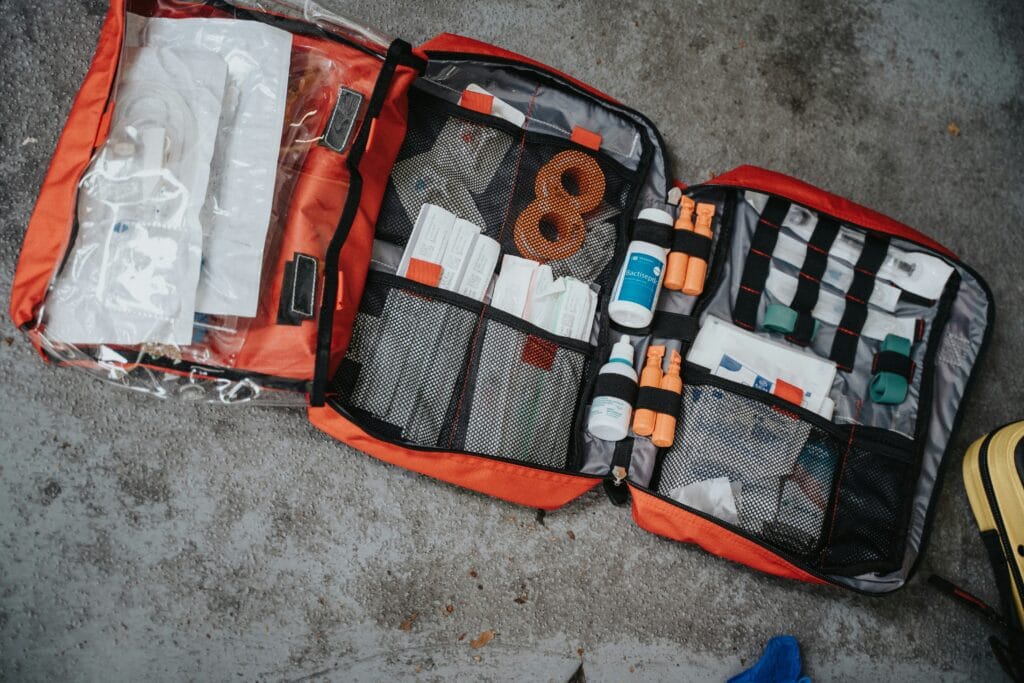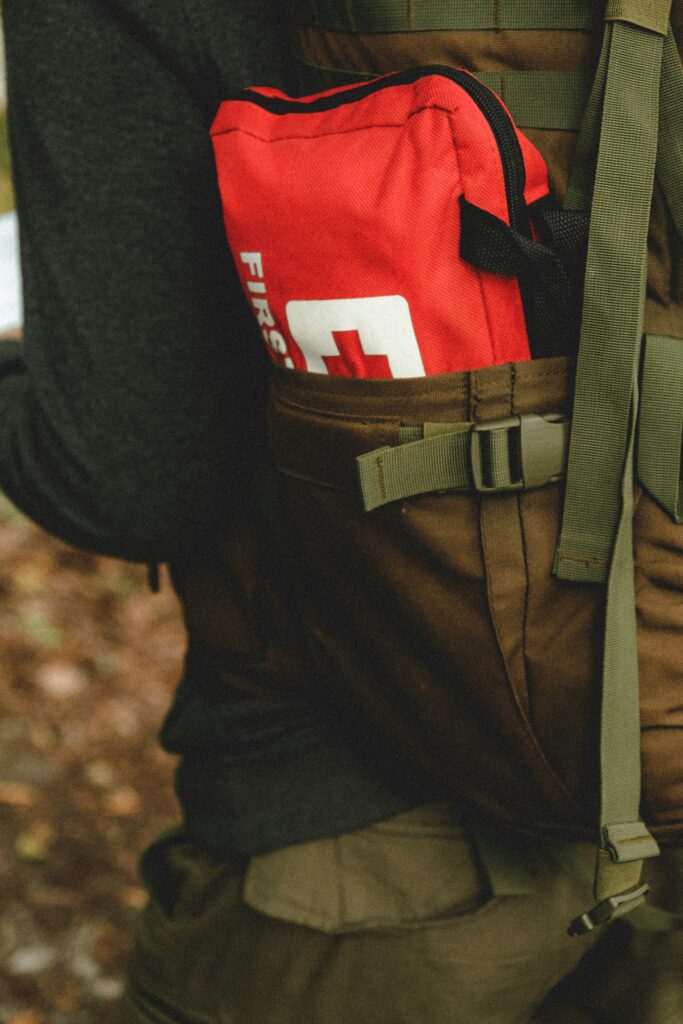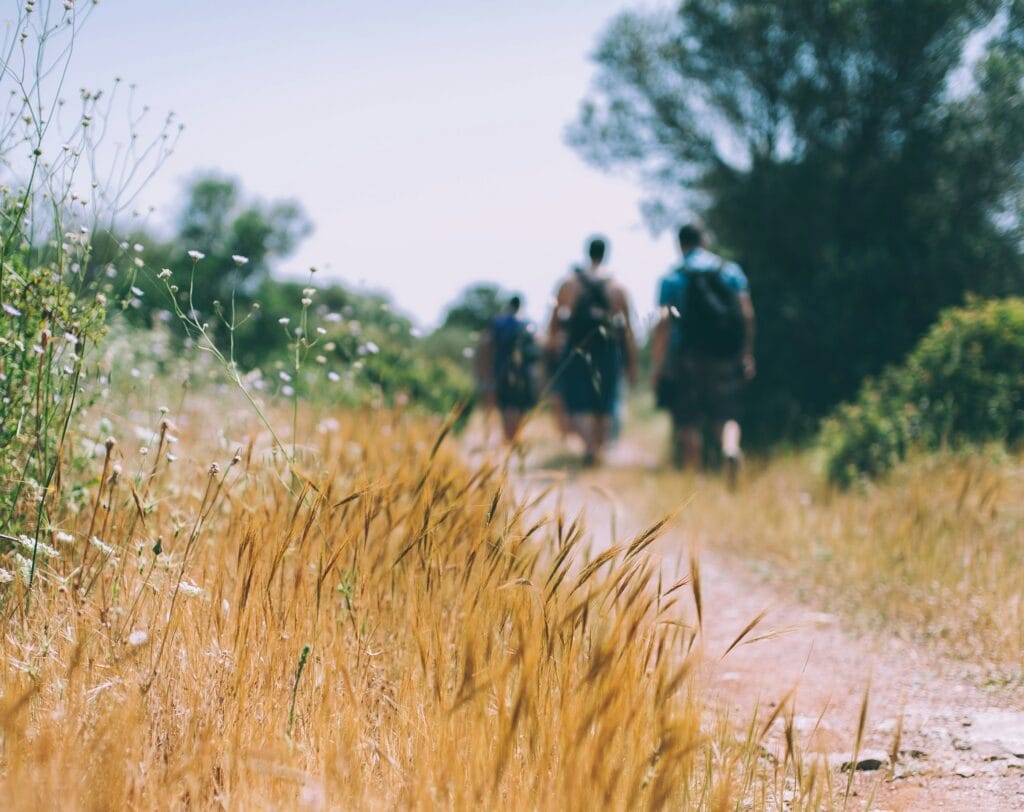*This article contains affiliate links*
Travelling with children is a bit like being a scout: always be prepared. Whether you’re heading to the beach, camping in the countryside, or hopping on a plane, someone will get a scrape, sting, or unexpected tummy ache – that’s where your trusty first aid kit comes in.
If you’re wondering about travel first aid kits: what every parent should pack, you’re in the right place. This guide will help you build a compact, sensible kit so you’re ready for (almost) anything—without packing half the pharmacy.

Why Bother with a First Aid Kit?
Because holidays with children are a magical mix of fun and unpredictability. One minute they’re climbing sand dunes; the next, they’re crying over a grazed knee, or declaring a mysterious tummy pain halfway up a hiking trail.
Having a well-stocked, travel-friendly first aid kit means you can handle small issues quickly—avoiding panic, unnecessary detours, and those overpriced corner-shop plasters.
What to Include in Your Travel First Aid Kit

Here’s a breakdown of the essentials that cover most common travel-related hiccups with children:
🩹 Plasters and Dressings
- Assorted waterproof plasters (bonus points for cartoon ones)
- Sterile gauze pads and adhesive tape
- Antiseptic wipes or spray
- Blister plasters (especially for new sandals or long walks)
💊 Medicines (Check Expiry Dates)
- Calpol (liquid sachets or meltable tablets for ease)
- Ibuprofen (child and adult versions)
- Antihistamines (for bites, stings, or allergies)
- Travel sickness tablets or bands
- Rehydration sachets (like Dioralyte)
- Saline nasal spray (great for flights or hay fever)

🐛 Bug, Bite & Sun Relief
- Insect repellent (check age suitability)
- Bite/sting cream (with hydrocortisone or antihistamine)
- Aloe vera gel or aftersun lotion
- High-factor sun cream (minimum SPF 30+ for kids)
🚿 Cleaning and Hygiene
- Antibacterial hand gel
- Mini pack of tissues
- Wet wipes (always wet wipes)
- Disposable gloves (for handling cuts or vomit)
- A small pack of toilet seat covers or loo roll (you know the drill)
🚑 Tools and Extras
- Digital thermometer
- Tweezers (for splinters or ticks)
- Safety scissors
- Nail clippers
- A roll of microporous tape
- Small torch (especially if you’re camping)
Travel-Specific Add-Ons
Depending on your destination, consider adding:
- Mosquito nets or bite patches
- Water purification tablets (for remote areas)
- Antiseptic cream or powder
- Cold packs (the snap-to-activate type)
- Emergency foil blanket
Tips for Keeping It Compact
- Use a zip-up toiletry bag or a purpose-made first aid pouch with compartments.
- Keep all liquid items in leak-proof ziplock bags.
- Label medications clearly—especially if you’ve decanted them into smaller bottles.
- Include a printed emergency contact list and note any allergies/conditions.
Don’t Forget Travel Documents

While not strictly medical, these can be life-savers in an emergency:
- EHIC/GHIC cards for European travel
- Travel insurance details
- Prescriptions (especially for regular meds)
- A short medical summary if your child has specific needs or allergies
When to Replace or Update Your Kit
- Check everything before and after each trip.
- Replace used or expired items straight away.
- Review your contents each year as your children grow—baby items out, tween essentials in.
Final Thoughts
When it comes to travel first aid kits: what every parent should pack, it’s about being prepared—but not overwhelmed. You don’t need to be a mobile chemist, just equipped for the bumps and bugs that come with family life.
A few smart additions to your suitcase can turn a potential drama into a manageable moment—and help you focus on what really matters: making summer memories.


1 comment
This guide is super practical! I love how it balances being prepared without overpacking. The tips on labeling meds and updating the kit yearly are especially helpful for traveling families.